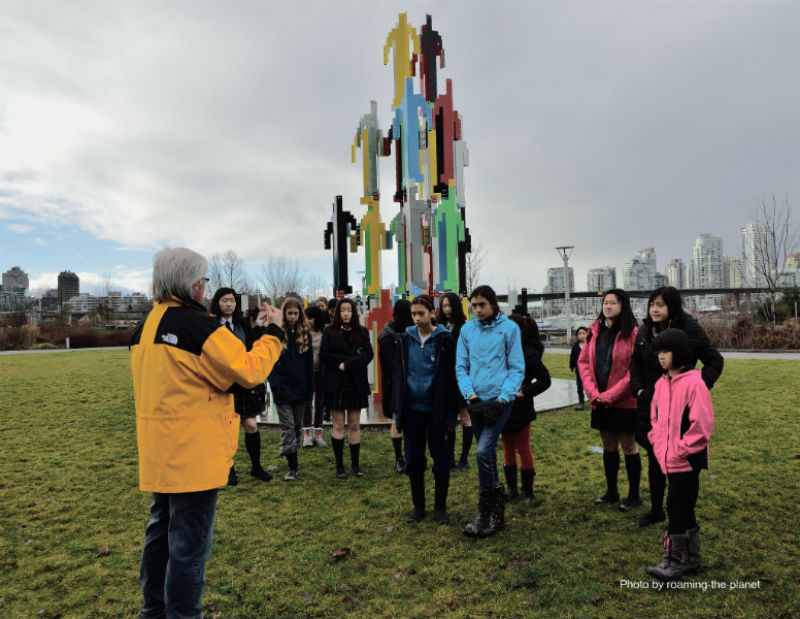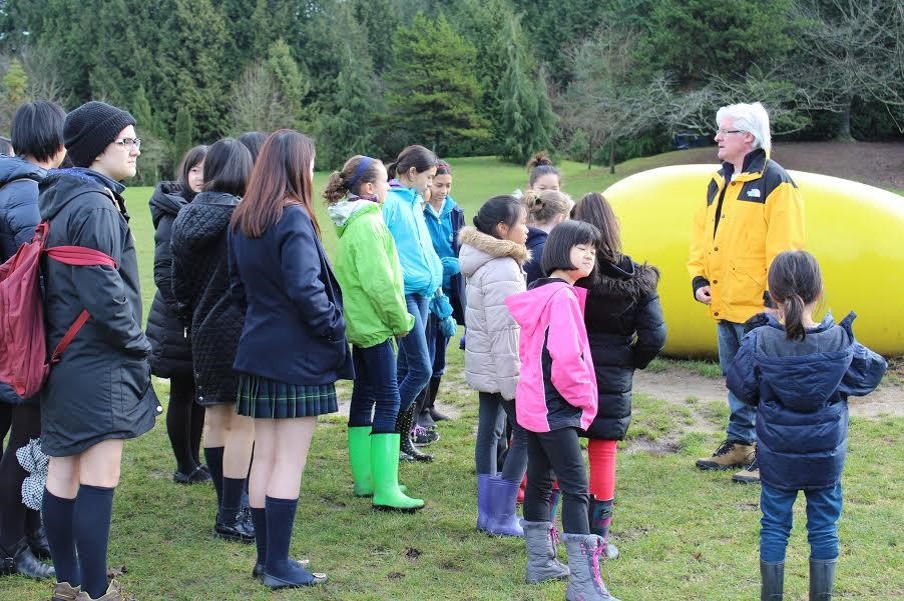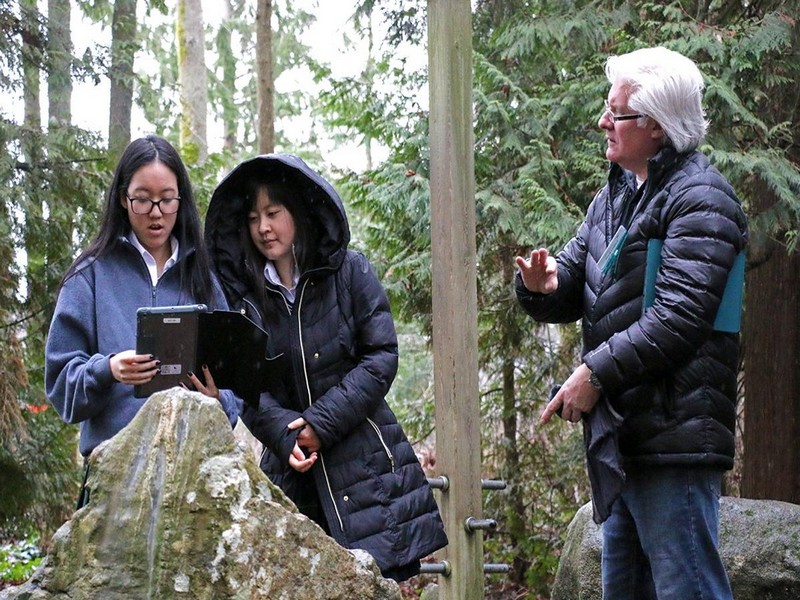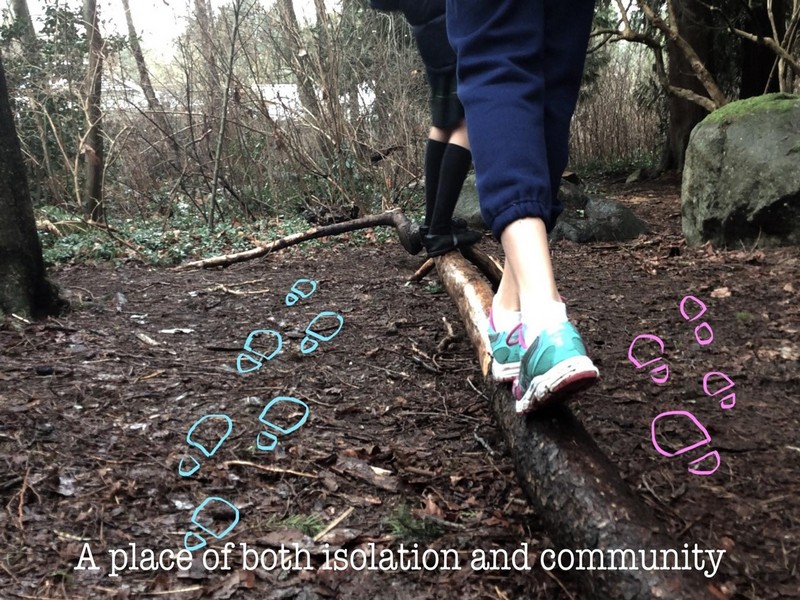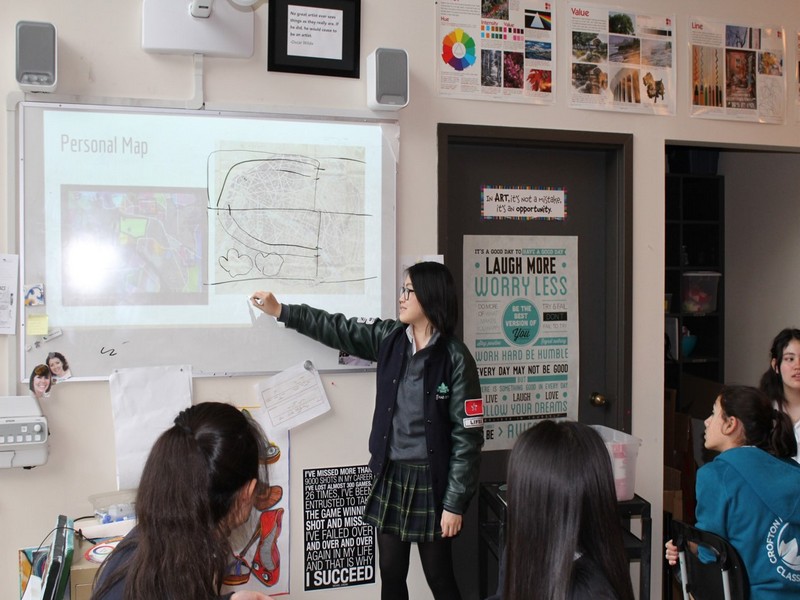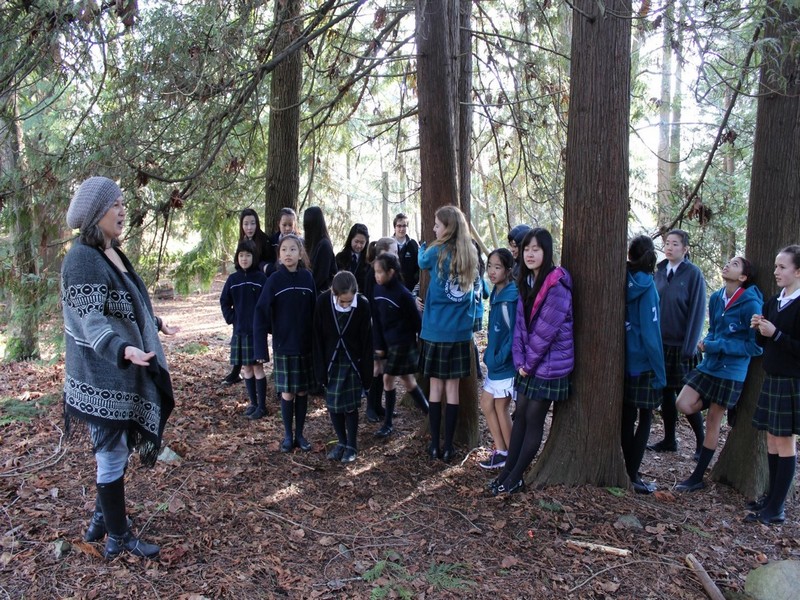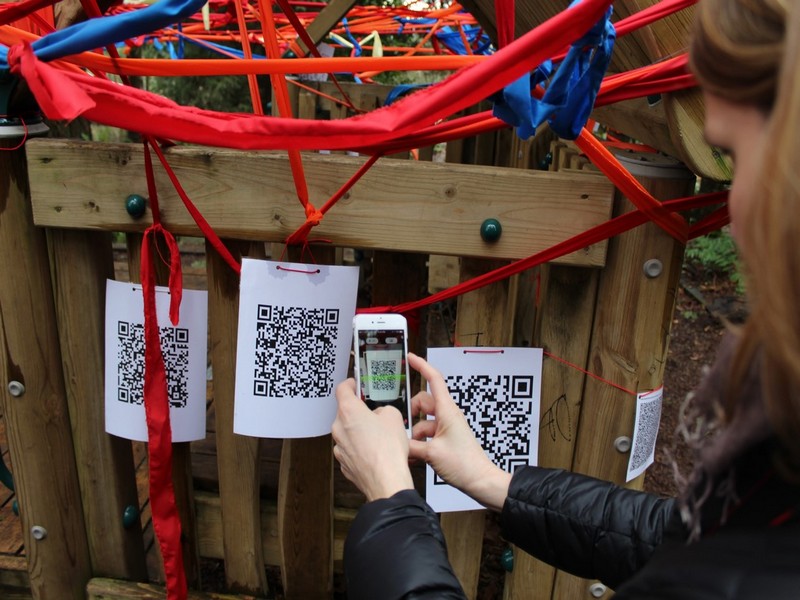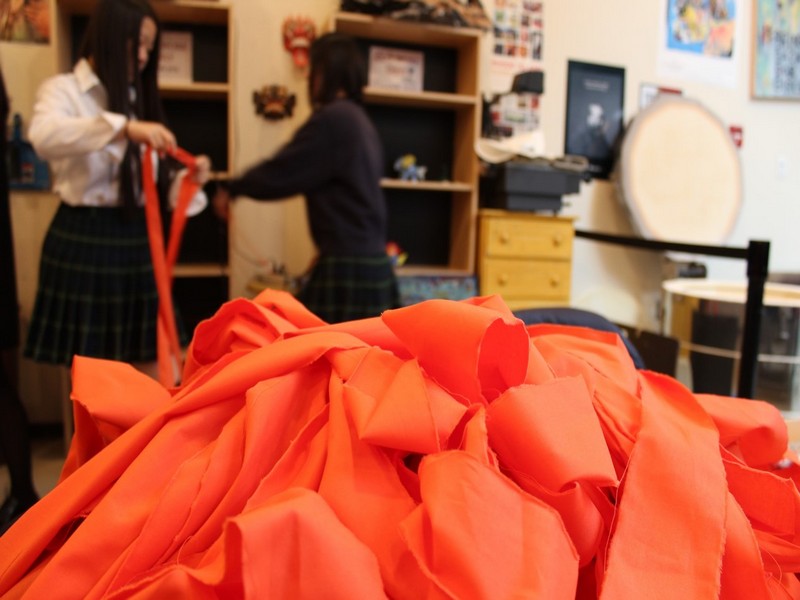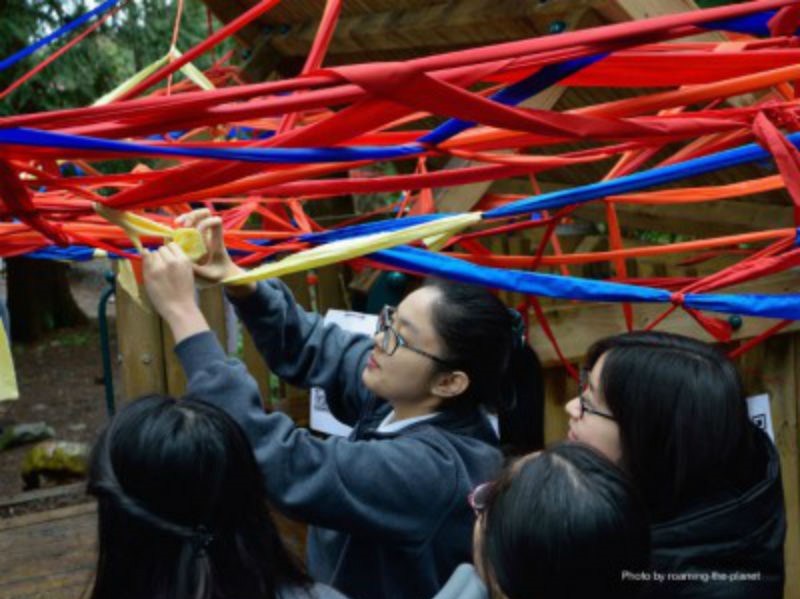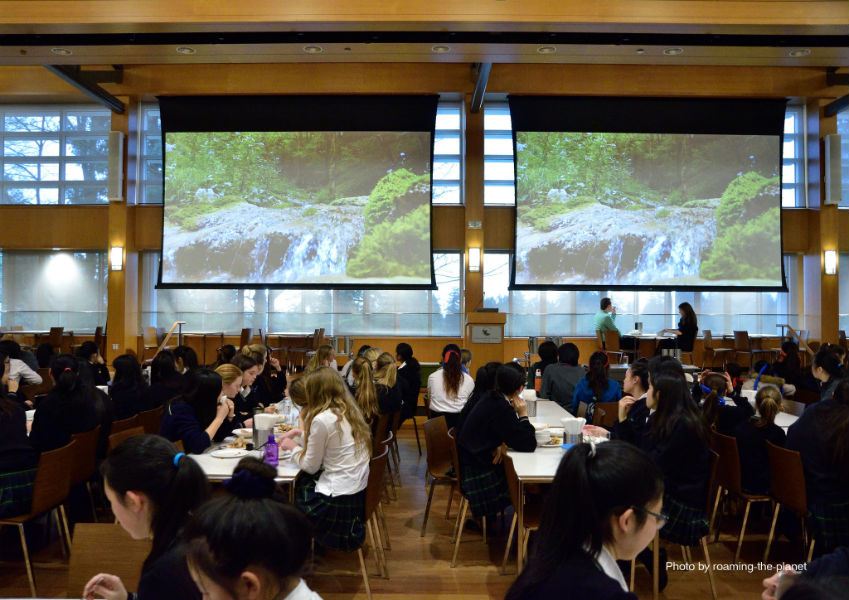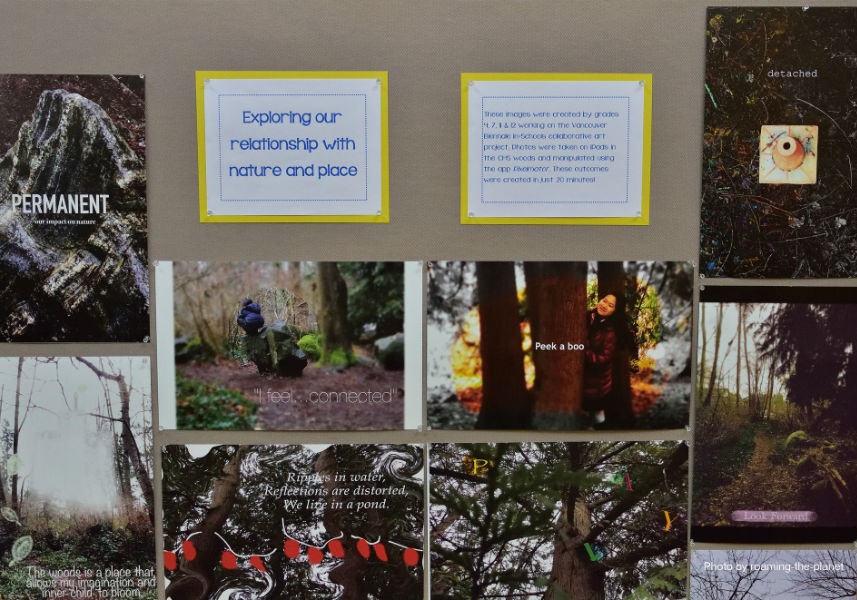Crofton House: Art as a Catalyst for Environmental Stewardship
Arts Education
School: Crofton House School
Teacher: Natasha Bathgate, Alison Gjernes, Kerry Harding
Artist Collaborators: Adrian Walker
Class: Grade 4, 7, 11/12
Overview
This project brought together 27 senior and junior school students from grades 4, 7, 11 & 12. Collectively they explored the BIG IDEA that art is and has always has been an extended part of nature, and that art can effect social change.
Through visiting and engaging with the Biennale artworks Human Structures Vancouver and Love Your Beans, students began to appreciate how public art and installation art directly relate to space and place, and how they can impact community. Our students then engaged the school community in dialogue relating to public art and activism; asking people questions such as “is public art important?”, and “should artists get involved with political activism?”
The outdoor places where students play on our campus are immensely treasured and valued by the students; they hold huge social and emotional importance. Through recalling memories and storytelling of experiences in the woods, we realised that we could use that space to literally connect our audience to our ideas. Subsequently we developed a ‘web’ installation in the woods on campus that became much bigger than we envisioned; it became a metaphor for our connections with place, memories, stories, technology and nature.
On our ‘launch’ date we invited people to add their own pieces of fabric to the web, thus making their own connections. The installation event became a wonderful experience of dialogue, fun, laughter and storytelling; this strengthened our appreciation for nature and a sense of place. Whether we achieved our aim of affecting social change is hard to measure, but the project most definitely opened people up to the recognition that art can be a powerful communicator and educational tool.
Connection to the Vancouver Biennale
During our visit to Human Structures Vancouver we discussed several ideas and questions:
- That when people come together and work as a harmonious whole they can create great things together.
- How is Borofsky’s sculpture emblematic of something that occurred in this city (Olympics) that illustrates this concept?
- How does the location relate to the piece?
At Love Your Beans:
- Finding a connection between the organic shapes inherent in the beans and natural forms we find in nature.
- Noticing the playfulness of the shapes and their site specific relationship to the playground / park / school.
BIG IDEAS
Art is and has always has been an extended part of nature and that art can effect social change. An appreciation for our connections with place can motivate us to want to protect it.
Guiding Questions
How does our connection to a place motivate us to want to protect it? Together we are a strong voice for places that have no voice of their own.
What is environmental stewardship? How does one become an activist? Can Art Save the world?
Cross Curricular Access
Social Studies & Language Arts (grade 4)
The significance of indigenous plants and land in First Peoples’ cultures in Canada
Ways in which First Peoples’ preserve identity and culture and how their stories connect people to the land.
The significance of art to First Peoples and its contribution to intercultural development
Science (grade 7)
Impact of humans on the earth, Climate change (Impact on our oceans – waste)
Math (grade 7)
Communicate information and data
Learning Process/Inquiry Challenges
Exploration of the woods: Students brainstormed ideas in the surrounding local wooded area. They explored how they could we bring the ideas of installation, social change and community connection into this project.
Students develop dialogue: Students researched Vancouver Biennale activism or installation art and in pairs engaged other students in dialogue in their advisory groups. Link to resources for student presentation: Presentation guidelines
Field trip: The project began with the students and the teachers exploring the Biennale sculptures – Human Structures Vancouver and Love Your Beans. The students explored ideas around the relationship between environment, connections and culture throughout the field trip.
Place in your heart activity: Students were asked to find a place in the woods of importance to them. A place of solitude. On a piece of paper they were to write down what this place meant to them and how this place was important to them.
Capturing a place in your heart: Students took photos using ipads of places in the woods that were of significance to them. Photos were then brought into the class and manipulated with an ap called Pixelmator. Text was added. Adrian Walker spoke with students about photo composition.
Mapping the woods: Examples of how artist have used maps were shared. A Collective Map was created: drawing exercise which allowed students to explore a personal representation of a part of the woods.
Exploration of Indigenous plants in the woods: Aboriginal Herbalist, Cease Wyss visited and took the students on a walk in the woods to discuss the significance of indigenous plants and their medicinal properties.
Models and brainstorming of the web installation: In small groups students brainstormed possible designs for our web installation. Then, they created small scale models of their proposed design using sticks, plasticine and string.
QR codes: Students were asked to reflect on the importance of nature and the significance of our impact on nature through writing, finding images, links to websites etc. These were all converted into QR codes and printed.
Final Installation & Celebration event: Inspired by the aboriginal tradition of marking places of personal significance using fabric, students and staff from the whole school worked collaboratively to create a web in the woods using coloured fabric. The web was adorned with the printed QR codes. During the event students, teachers and guests were encouraged to consider the following questions:
- Why do you think they chose this site, over anywhere else in the school grounds?
- What connections (physical, implied or metaphorical) do you see in this art installation? – remind them that the installation is not just the structure, it includes the participatory aspect of the people moving around it
- How can the concept of a web be interpreted in our (your) subject area?
Final Film: What does nature mean to you?
Inspired by the Soul Pancake Series 1-100, many members of our community were interviewed with the question: What does nature mean to you? From a 9 month old baby to a 90 year old grandmother.
Timeline
December:
Planning and conceptualizing sessions. The artist and the teachers planned the entire project, discussing the objectives, approach, workshop activities
January:
Field trip to Human Structures Vancouver and Love Your Beans
February:
Class discussions, brainstorming and photographs.
March:
Brainstorming, reflecting, models of web and installation.
Interviewing and filming for video.
Celebration and showcase of installation and film.
Reflection
Teachers – Artists
Kerry Harding, Grade 6/7 Art Teacher
“The process of working through a Big Ideas Biennale project was an amazing opportunity. Three areas of growth stick out to me the most: Collaboration, Risk Taking and Community building.
Collaboration: It was so wonderful to work with three innovative art educators and artist, Adrian Walker, everyone brought so much to this project. There were so many layers to this project.
Risk Taking and Community Connection: It was very challenging logistically to bring three different grades from across the school together but so worth the effort when we saw the grade 4, 7 and 11/12’s work together. Through the initial idea development and the creation of the installation many aspects of community were explored; interviewing people, putting the installation up, and thinking about our place in the world and our influence on it. Our final installation for me was a celebration of the learning process that students and teachers experienced through this project.”
Natasha Bathgate, Senior School Art Teacher, Coordinator of Creative Arts & Design
Our Big Ideas Biennale project facilitated so much of what is valuable about art; dialogue, creative thought, collaboration and critical thinking. As I was constantly aware that our project would be in the public domain, this forced me to be highly reflective and analytical of everything we did, which I believe has helped me to grow as an educator. Working across multiple grades was quite the game changer for my senior students as they were quite shocked at how creative and confident the younger students were; it was interesting to watch the dynamic among them! As with any successful inquiry project, the learning occurs mostly in the process, and as our ‘final product’ continued to be built and engaged with by others in the community, it felt like the learning experience spread beyond the initial ‘Biennale group’ of students. This of course was our aim, however seeing it an action was immensely rewarding.
Alison Gjernes, Grade 1-5 Art Teacher
There were countless noteworthy moments throughout this process, but several particularly stood out for me. First of all, this project lessened the gap between our senior and junior schools. Rarely do our young students have the opportunity to engage with the senior students due to differing timetables and physical space. I was concerned that our younger students would be intimidated, but they continually surprised me with their openness and enthusiasm. The support and participation of our school community was another highlight of this project. Having a final installation in which others could interact with and add to meant that our school community came together for a shared purpose. Finally, collaborating with other teachers and a local artist was invaluable as we all brought different perspectives and approaches to this project which led to a very successful process and outcome.
Katherine Tong, Education Program Director, Vancouver Biennale
“The Vancouver Biennale’s partnership with Crofton House School through the BIG IDEAS education program was an impressive realization of the art inquiry-based learning process. Through the exploration of several of the Vancouver Biennale’s large scale public art installations across Metro Vancouver, the junior and senior school students responded through the creation of a unique outdoor interactive art installation and photo-based artworks on the issues of social change and human connectivity to the environment. As an educator, it is rewarding to experience this level of engagement & discussion that encompassed the entire school community in meaningful dialogue through the Arts. Congratulations and a BIG THANK YOU to everyone whose collaboration helped facilitate these ‘Significant Learning Moments’.
